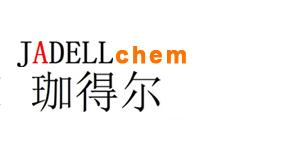Recombinant Human Interleukin-7 是一种造血细胞因子,促进造血干细胞移植后 T 细胞免疫重建。
Synonyms
rHuIL-7; LP-1; pre-B cell factor
Species
HumanSource
E. coli Accession
P13232 Gene ID
3574 AA Sequence
DCDIEGKDGK QYESVLMVSI DQLLDSMKEI GSNCLNNEFN FFKRHICDAN KEGMFLFRAA RKLRQFLKMN STGDFDLHLL KVSEGTTILL NCTGQVKGRK PAALGEAQPT KSLEENKSLK EQKKLNDLCF LKRLLQEIKT CWNKILMGTK EH Biological Activity
The ED50 is <0.5 ng/mL as measured by murine 2E8 cells, corresponding to a specific activity of >2.0 × 106 units/mg. Appearance
Lyophilized powder. Formulation
Lyophilized after extensive dialysis against PBS, pH 7.4. Endotoxin Level
<1 EU/μg, determined by LAL method. Reconstitution
Reconstitute the lyophilized recombinant Human Interleukin-7 (rHuIL-7) to 0.1-1.0 mg/mL using sterile distilled water or aqueous buffer containing 0.1 % BSA. Storage & Stability
Lyophilized recombinant Human Interleukin-7 (rHuIL-7) is stored at -20°C. After reconstitution, it is stable at 4°C for 1 week or -20°C for longer. It is recommended to freeze aliquots at -20°C or -80°C for extended storage. Shipping
Room temperature in continental US; may vary elsewhere. Background
Recombinant Human Interleukin-7 (r-hIL-7) has a central role in T-cell development and survival and enhances immune recovery in murine models of allo-hematopoietic stem cell transplantation (allo-HSCT). Recombinant Human Interleukin-7 induces a doubling in CD4+ and CD8+ T cells. The main effect of IL-7 is an expansion of effector memory T cells. r-hIL-7 can enhance immune recovery after a T cell–depleted allo-HSCT without causing significant GVHD or other serious toxicity[1]. |



